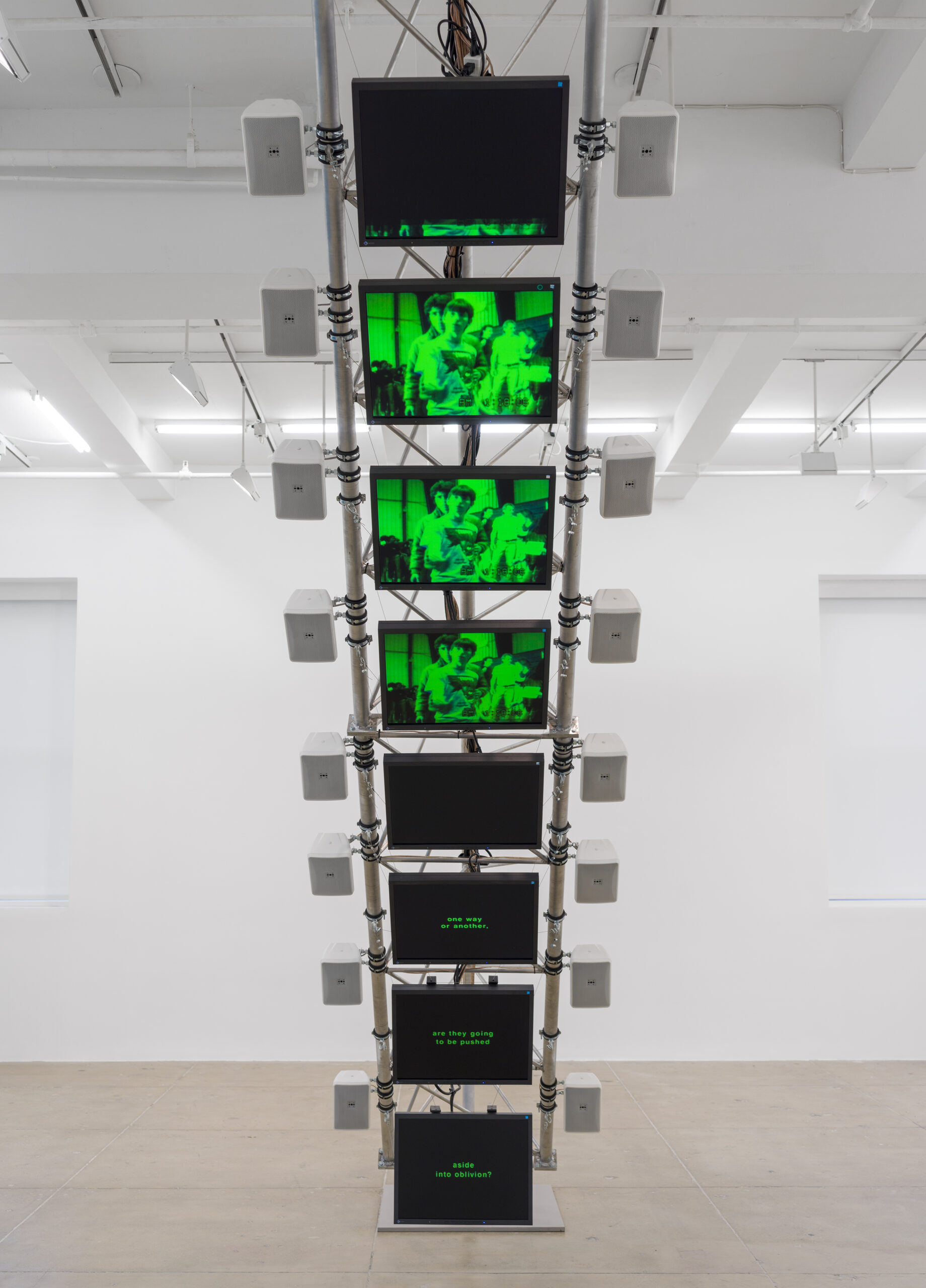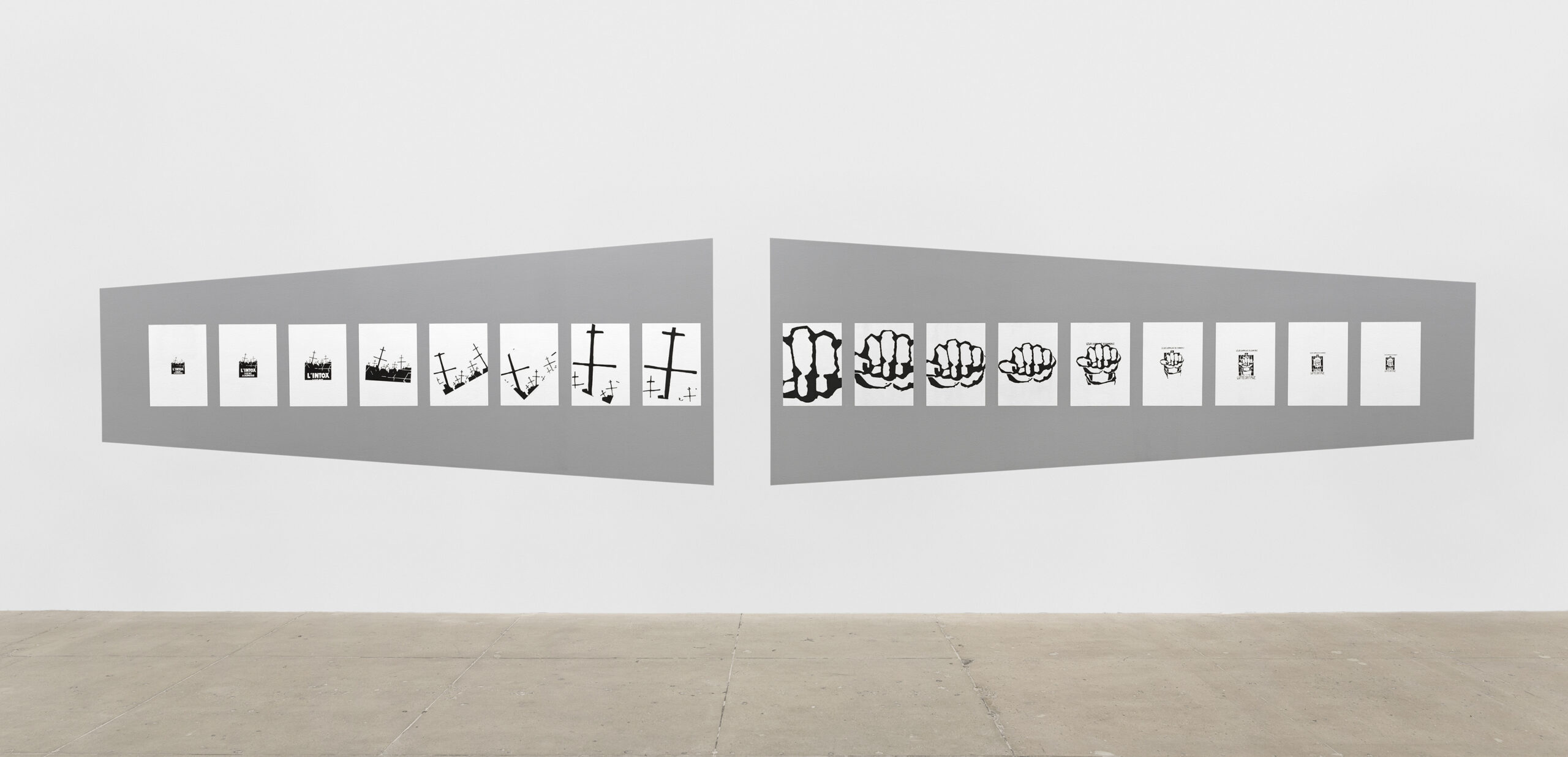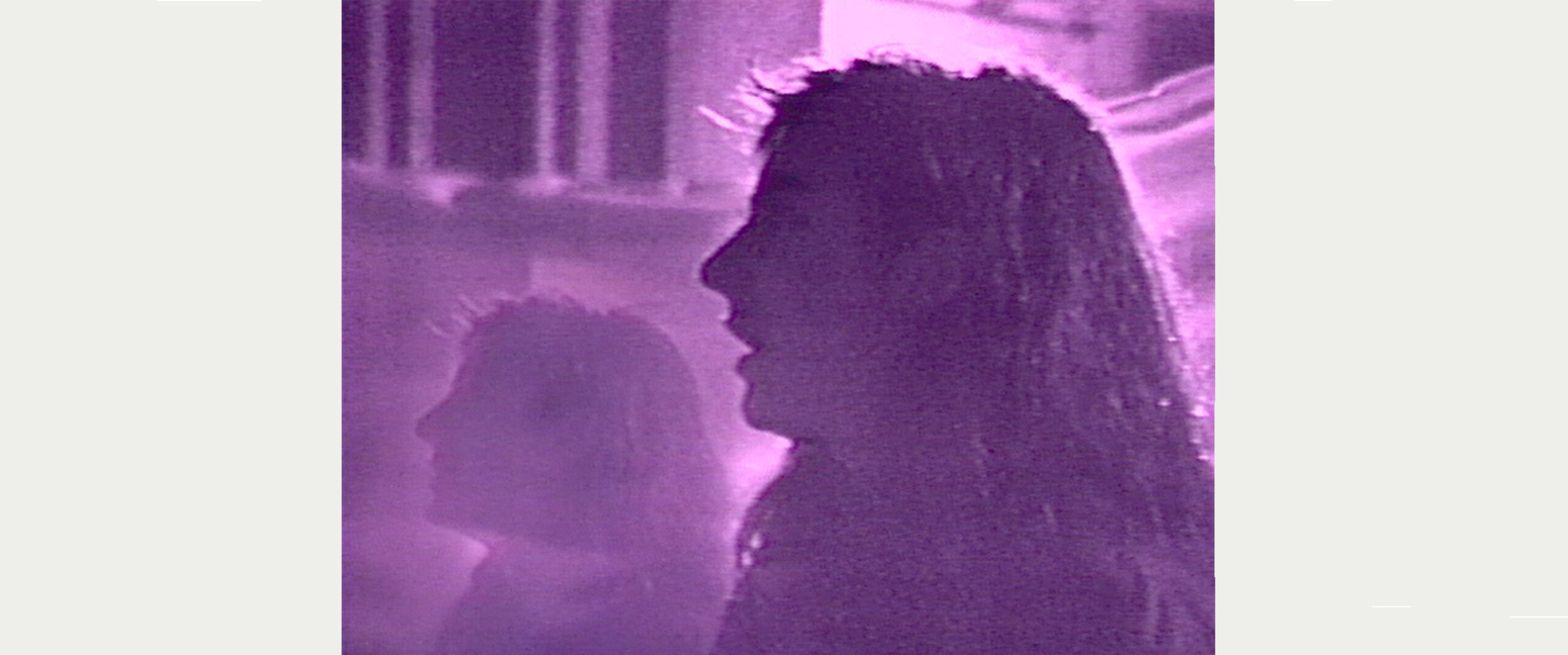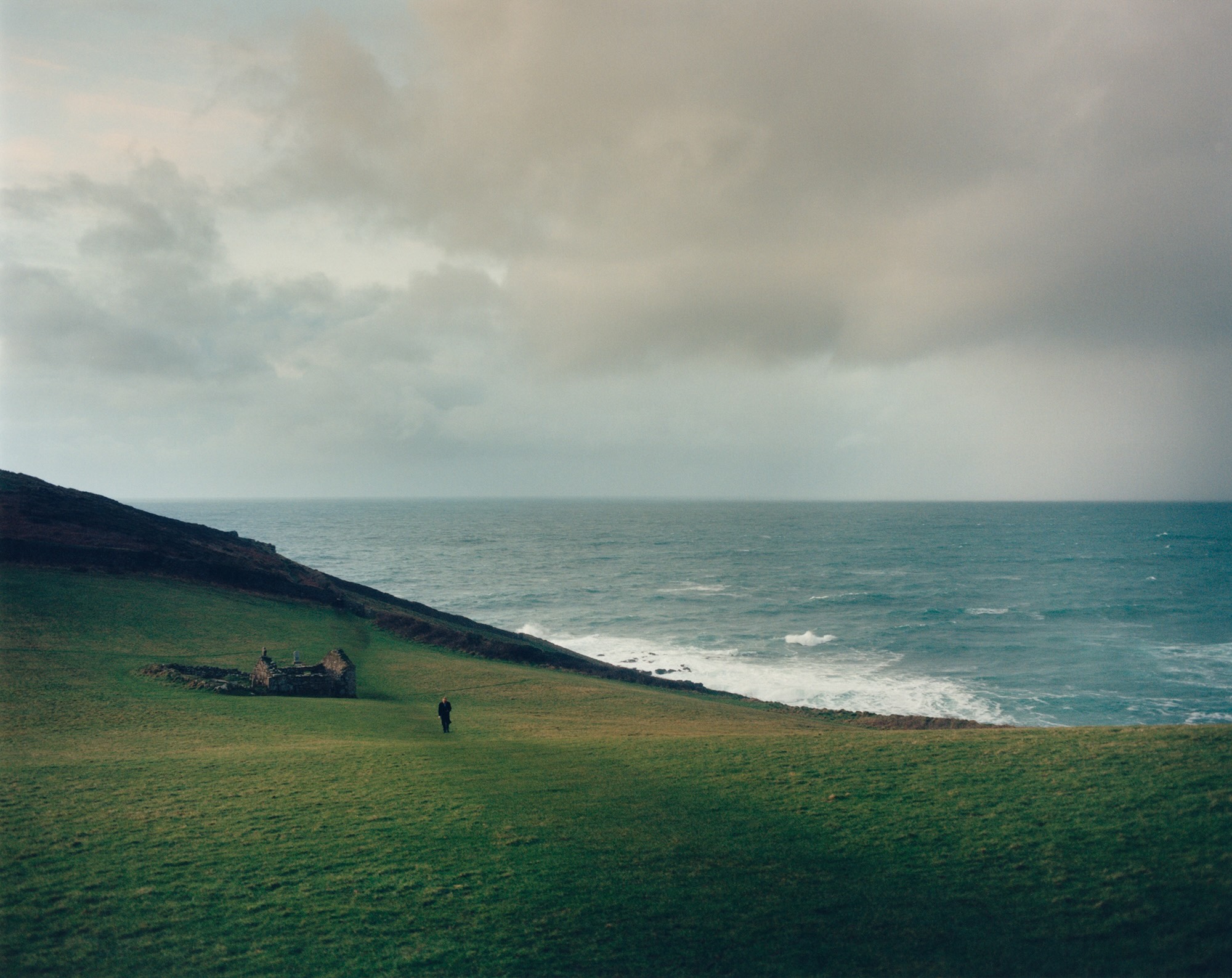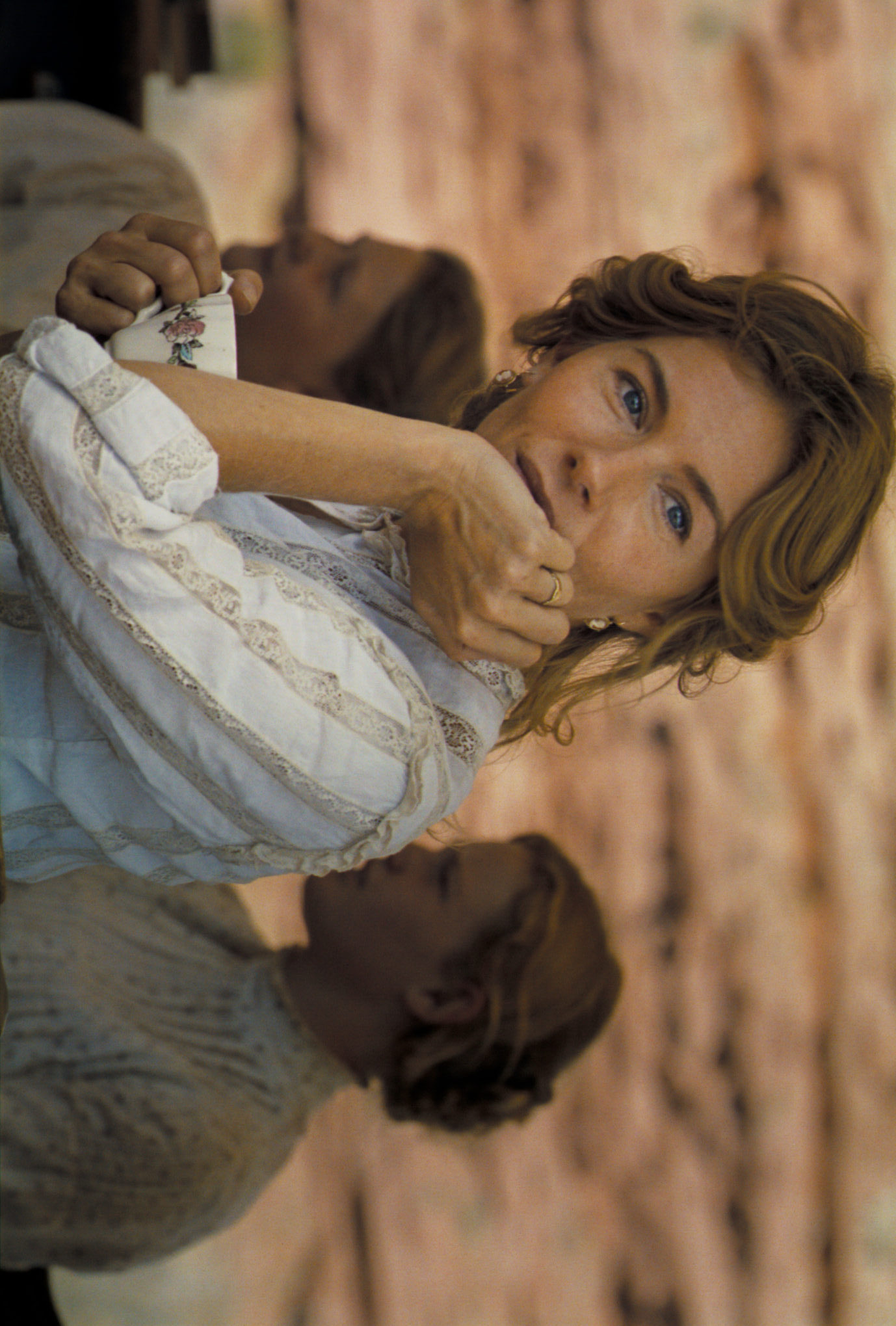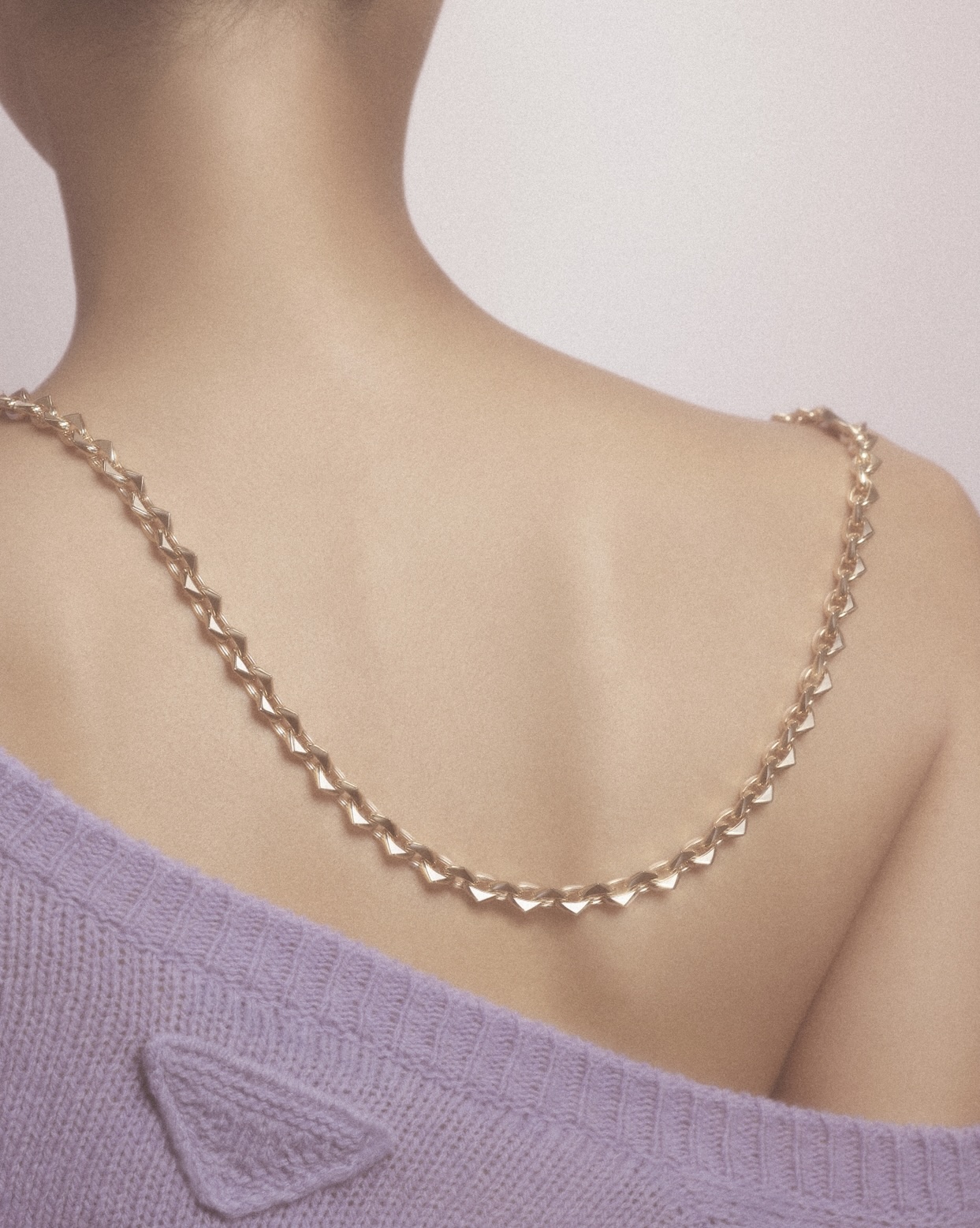Four Works: Accountability
Marian Goodman Gallery, New York
From January 12th, 2024 until February 20th, 2024
Born in New York in 1946, Dara Birnbaum is a pioneer in American video art. The focus of her research is directed towards the phenomenology of mass media and capitalist ideologies, observed through a feminist lens aimed at promoting the themes of social struggles and principles of self-determination. Her early works date back to the 1970s, and among them is Mirroring, created in 1975: in this piece, Birnbaum appears in front of the camera in a medium shot, then slowly approaches it, fixing the viewer directly. As she advances, her image blurs. Subsequently, in close-up, she seems to turn simultaneously towards and away from the camera, suddenly appearing duplicated. Birnbaum’s generation was particularly drawn to Hollywood images and language; however, the artist has always been fascinated by their manipulative power rather than their allure. This led her to confront U.S. broadcasting regulations from the outset to pursue her work. At the Marian Goodman Gallery in New York, a new exhibition explores the codes and gestures through which we have experienced the history of global politics. Spanning various mediums, Birnbaum’s works include a multi-channel installation, a single-channel video, pigment archival prints, and UV prints on Duratrans.
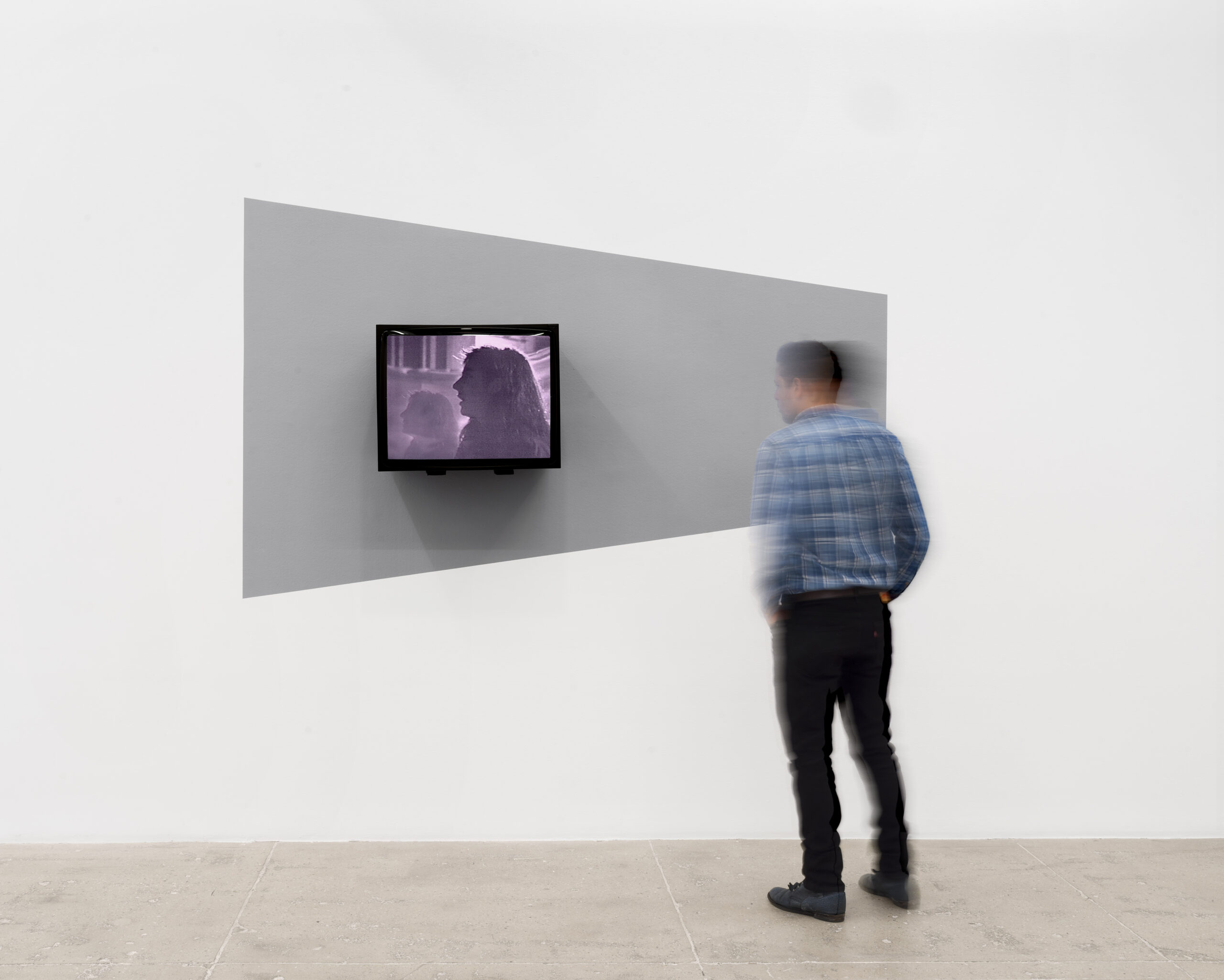
Whom bomb?
We bomb them!
What do we do? Who do we bomb?
You bomb! You bomb them!
The exhibition revisits Birnbaum’s interest in historical memory as an intrinsic feature of video channels and the mutability of images on the screen. Transmission Tower: Sentinel (1992), commissioned for the first time for Documenta IX in Kassel by curator Jan Hoet and conceived immediately after the first Gulf War, takes the telecommunications structure as an example and juxtaposes three different forms of political discourse. Divided into two sections, a ROHN transmission tower is used as scaffolding from floor to ceiling for eight video monitors, through which images and sounds overlap, laying bare the deep interweaving between mass media and military forces, entertainment and politics, visibility, and the potential for protest. The small ROHN television tower, invented in Peoria, Illinois, in 1948, was then the key transmission infrastructure for the entire United States and a ubiquitous presence in military telecommunications worldwide. On the next screen, a recording made by Birnbaum of poet Allen Ginsberg reading the poem Hum Bom! at the 1988 National Student Convention is played. Simultaneously, footage of some protesters climbing to the top of the tower overlaps. The passion, enthusiasm, and relative chaos that ensue sharply contrast with the meticulously studied and prepared message of other video footage, where President George H. W. Bush delivers the Thousand Points of Light speech to promote volunteer activities during his inauguration at the Republican National Convention of the same year.
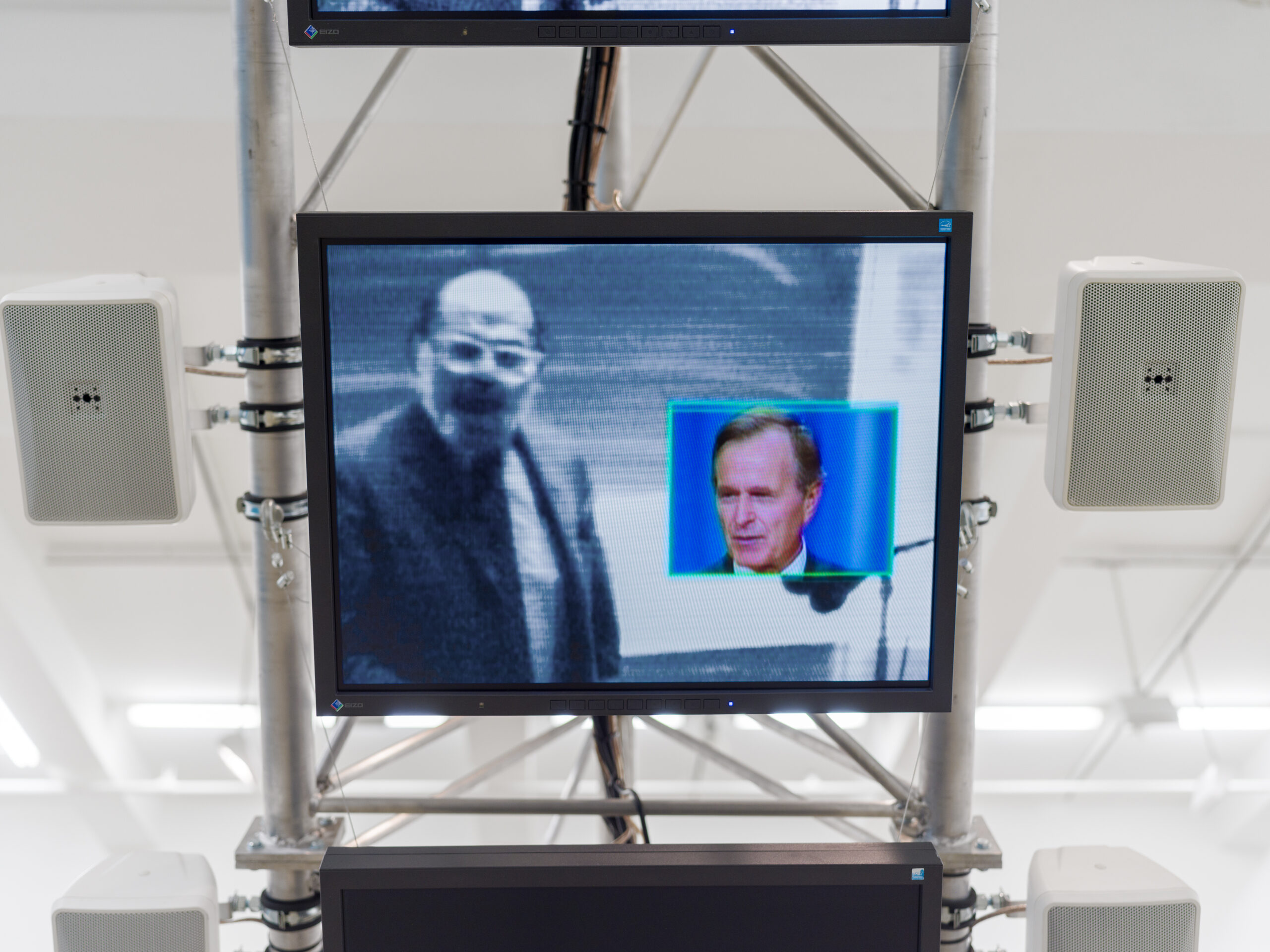
“I didn’t want to engage with the media by translating them into other media, but rather use video within the video.”
Note(s)
Work(ing)
Process(es)
Antenna/Fist (1992) is a series of seventeen prints appropriating images from street posters created during the fervor of May ’68 in France when the student revolution planted the seeds for a general strike that swept across the entire state. Produced collectively and widely distributed, the posters displayed in the streets were created by a collective of artists based at the then-occupied École des Beaux-Arts in Paris. The iconographies chosen by Birnbaum—the raised fist, famous during the Spanish Civil War, and the massive silhouette of a pointed antenna—are expressions of the counterculture of the period, carrying with them the fervor of social idealism, rebellion, and rejection of the status quo that permeated French society and characterized the second half of the 20th century. These protest messages are juxtaposed with the single-channel video Canon: Taking to the Streets (1990), composed of archival footage from the Take Back the Night demonstration at Princeton University in 1987. The work abstractly represents the march from the campus to locations where various sexual assaults occurred. Shot by students with a low-quality VHS camera, the piece simultaneously portrays moments of aggression alongside scenes of some men divided into fraternities mocking the protesters. The pathos of popular imagery crystallizes in Quiet Disaster (1999), a triptych of circular prints depicting individuals in peril and their expressions of fear. Today, Dara Birnbaum’s research, spanning almost fifty years, continues to track the colossal transformations of technology and our ways of consuming and perceiving it, remaining extraordinarily relevant.
